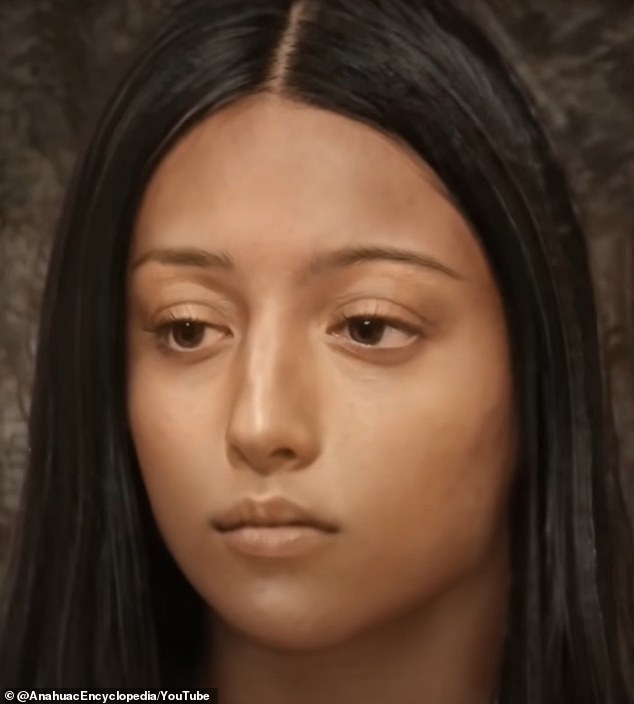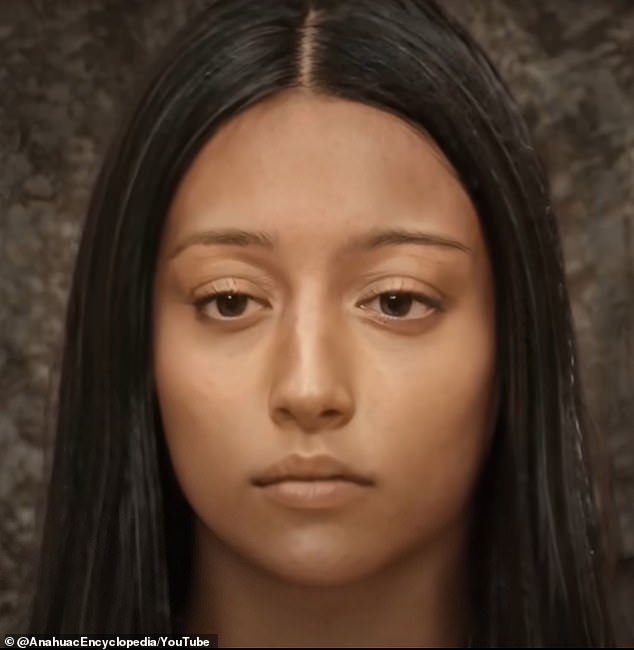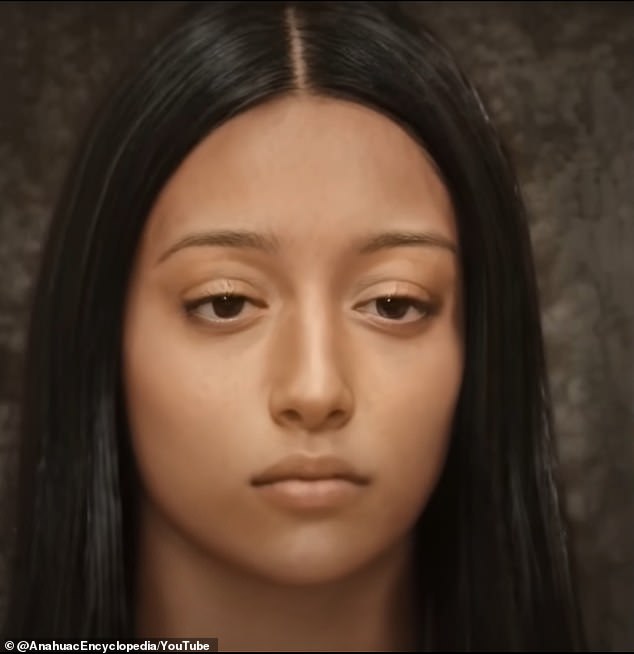An artist has created a ‘very realistic’ image of the Virgin Mary using AI, showing her as a teenage girl with long black hair, dark eyes and a darker complexion.
Miguel Ángel Omaña Rojas, from Mexico, reconstructed the face of the Virgin of Guadalupe as she appeared on a cloth worn by St Juan in Mexico more than 700 years ago.
The technology spent weeks analyzing the image of Mary, studying each component’ to ‘capture gestures and expressions in a dynamic way.’
The image of the Virgin Mary, they said, allows the world ‘to finally see what the most famous woman… looked like in real life.’
While Mary was believed to be Middle Eastern, cultures have changed her appearance to fit their local populations, such as why the Virgin of Guadalupe is portrayed with a combination of Indigenous and European heritage.
Theologians have suggested that Mary also chooses her form when appearing, becoming a familiar face to her followers.
Pat Mora, author of the children’s book, The Beautiful Lady: Our Lady of Guadalupe, told NBC News: ‘She is used as a symbol of justice.
‘That’s because she holds an appeal to the poor, to marginalized people. In the modern day, we can see her as representing people standing against oppression, and declaring their independence.’


Christians believe that Mary left a miraculous image of her appearance on his cactus fiber cloak, or tilma, which still exists today for all to see in the Basilica of Our Lady of Guadalupe in Mexico City.
Omaña Rojas created the images in 2021, but they have resurfaced online as believers have praised the results.
His AI system identified key features, such as her facial structure, skin tone and expression, of Mary’s face to recreate the life-like photos.
The technology then used pre-trained models, like those trained on large human faces and body datasets, to ‘translate’ abstract or stylized features into realistic ones.
Omaña Rojas also used a database of real human features for the AI to find matches to those of Mary of Guadalupe, which it then synthesized into a lifelike image.
The AI finished the project by adding realistic textures to Mary’s skin and hair, bringing her to life.
‘This is the most faithful approximation that artificial intelligence was able to carry out,’ Omaña Rojas shared in a video to his YouTube account Anahuac Encyclopedia.


According to the Bible, when Jesus was born, Mary and Joseph presented him to the church to be blessed when a man named Simeon who said he was waiting for the Messiah to come and rescue Israel prophesized their baby’s death.
‘This child is destined to cause many in Israel to fall, and many others to rise. He has been sent as a sign from God, but many will oppose him,’ Simeon said, according to Luke:2.
‘As a result, the deepest thoughts of many hearts will be revealed. And a sword will pierce your very soul.’
The Christian faith believes that Jesus was crucified nearly 2,000 years ago, in the spring of 33 AD, for claiming to be the king of Jews which was considered treason against the Roman emperor and was a crime punishable by death.
After his crucifixion, ‘Mary sank to her knees, her agony too deep for words,’ the Book of Matthew 27:45 said.
‘Still echoing in her ears was her son’s last outcry as he died after hours of torment. The sky had gone dark at midday. Now the earth shook violently.’

